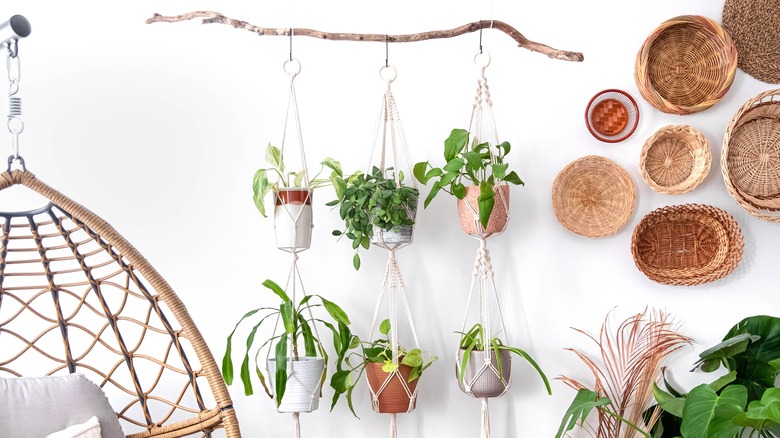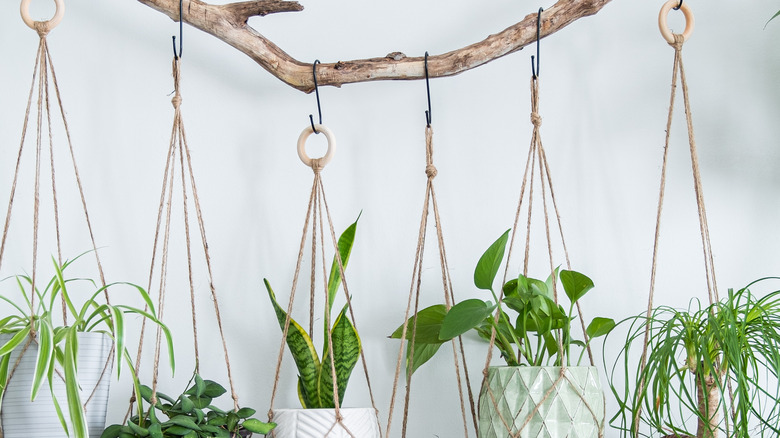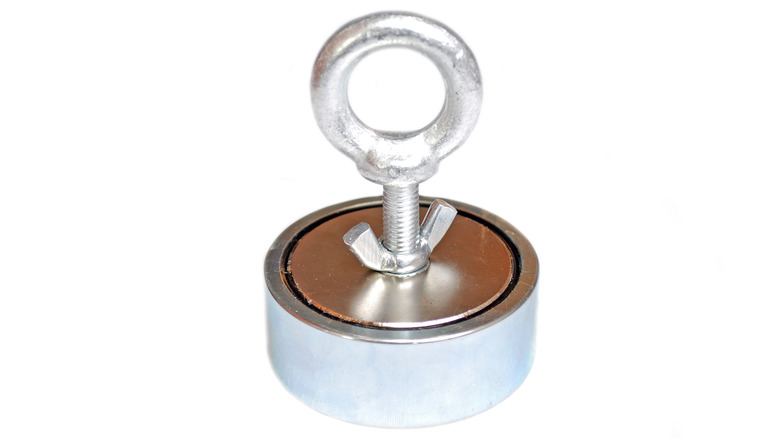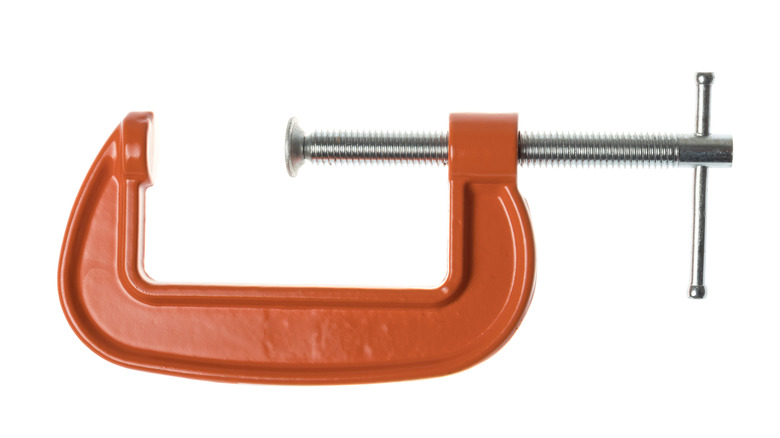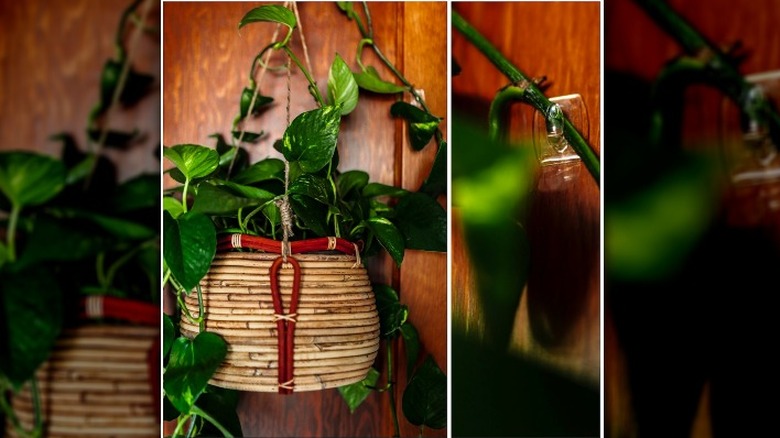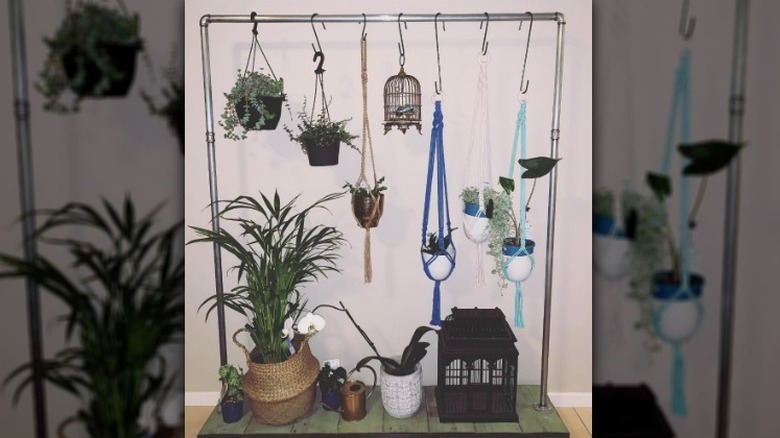Damage-Free Ways To Hang Plants In Your Rental
We may receive a commission on purchases made from links.
No home is complete without a little greenery. Even if you're not a plant parent, adding a bit of foliage or living floral decor can bring more life into your abode. Taking care of houseplants can reduce stress levels, improve your focus, and also act like a personal living HEPA filter for your home, notes Healthline. Being a plant parent also gives you a sense of personal accomplishment because let's face it, not everyone is gifted with the plant version of the Midas touch.
But what if you're currently renting a place and would prefer to get your entire deposit back, instead of a fraction of it because you had to put one (or five) holes in the wall to hang some plants? (Which is totally reasonable, by the way.) Thankfully, there are people around the world who have been in this very rental deposit versus plant parent predicament. And lucky for you, we've sourced some of the best houseplant hanging home hacks that these foliage friends have shared on the web. Now you can live peacefully knowing that your plants can happily decorate your home, the rental walls will remain puncture free, and your deposit should end up back where it belongs: in your wallet.
Curtain rods and S hooks
If you're lucky enough to rent a place that already has curtain rods installed, then you're one step ahead of the game. The first step to properly hanging plants on curtain rods, according to Garden Tabs, is to make sure that the curtain rod and the brackets can sustain the weight of the plant itself. For the most part, you can expect a curtain rod to hold anywhere from 10 to 45 pounds, depending on what it's made of and how well the brackets have been secured to the wall.
No curtain rods? No problem. This is where tension rods come in handy. They're easy to find, simple to install, and relatively affordable. Just make sure to measure your window so that the tension rod will securely be able to hold your foliage family. If you're really looking for plant security, a tension rod room divider might also be an option.
You'll also need to be able to remove your plants from their perches in order to give them a drink. That's why S hooks are your go-to for attaching your plant hanger to the actual rod. You can use fancy shower curtain hooks as well if you're looking for some extra pizzazz.
Magnetic plant hooks
You obviously know that you can't just use a normal refrigerator magnet to hang heavy plants. That just spells out disaster (for you, the plant, and the rental). The key is to look for a hook that's made with neodymium. These super-strong magnets are part of the Rare-Earth magnet family and are 10 times stronger than your typical fridge magnet, per K & J Magnetics. Some rare-earth neodymium magnets can hold over 100 pounds.
So you've got your neodymium plant hooks, but how do you know where to let them do their thing? These plant hooks are strong enough that they can sense the studs through the walls. You can use the magnet to locate them by carefully sliding it across the ceiling or wall. Keep in mind that drywall screws aren't incredibly big, so that means your supermassive power magnet won't have too much to latch on to. (Which means less support for your plant.) A better bet is to see if there are any exposed metal plates, bolts, or support braces that it can cuddle with.
Hang plants with a C-clamp
If you have exposed beams in your rental home, then it's time to make a pothos curtain using C-clamps as the main hanging point. C-clamps, writes About Mechanics, are metal, C-shaped clamps that are typically used in woodworking. They come in different sizes and are manually cranked to both loosen and tighten. C-clamps can be purchased at any home improvement store, or online, and are relatively inexpensive.
A word of caution when using these powerful metal clamps. If you're attaching them to a painted structure, make sure to put something between the wall and the places that the clamp with be "biting" down on. This will prevent any dings, scrapes, or property boo-boos from happening. A soft, porous fabric-like felt works great. You can also use hardwood floor furniture protectors, which have adhesive backings. If you don't have any felt or protection stickies, head over to your first aid cabinet and see if there's any moleskin. That can work, too. Lastly, don't overtighten the C-clamp. These tiny mechanical jaws pack a lot of punch in one tiny area, which means accidental indentations in the surface that's being chomped on.
Get some Command hooks
Who doesn't love a good Command hook (or something like it)? Command hooks come in a whole assortment of different weight classes, so there should be an option for almost all of your plant pals. These versatile hooks work well for making vertical succulent gardens, via Happiness Is Creating, and Houseplant Authority notes that the smaller hooks (that are typically meant for holiday lights) are excellent for keeping your viney plants in check. You can also use these removable sticky hooks for smaller greenery like air plants and lightweight ferns.
A world of caution. Make sure you pick the right hook for your hanger. Some Command hooks won't work with heavier pots. You also need to be careful when you remove your command hooks, warns Paint Strategies, because improper removal means the paint (or more) can peel off with the sticky backing. Command hooks aren't meant to be used on wallpaper or textured walls, so that's also an important tidbit of info to keep in mind.
Use a clothing rack
If you have some extra room, Balcony Garden Web states that opting for a standalone clothing or coat rack is an excellent way to display your fabulous foliage. Not only does it give you more versatility in the types of plants you keep (you're not just stuck tending to plants that only do well in full sun), but using a mobile clothing rack that's filled with plants can almost act like a nature-filled privacy screen. Clothing racks are a great option because you can utilize different layers, depending on the plants. You can hang them from the top bar, the sides, or let little squat euphorbias and high-reaching snake plants chill down at the bottom.
Another fun option is to use a coat rack to hang your plant buddies. That being said, some are less sturdy than others, so you need to be careful with how you arrange your hangers as well as the type of plants you actually use.
